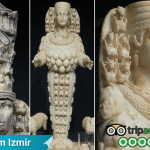The Temple of Serapis in Ephesus highlights the city’s strong cultural and religious connection with Egypt. The Serapeion was constructed in the 2nd century A.D. during the reign of the Antonines. Dedicated to the Egyptian god Serapis, it represents the fusion of Roman and Egyptian beliefs, especially the contrasting views on the afterlife. Ephesus maintained close connections with Alexandria through trade and shared religious practices. Inscriptions and artifacts, including statues and a peace document featuring both Artemis and Serapis, confirm this bond.
Table of Contents
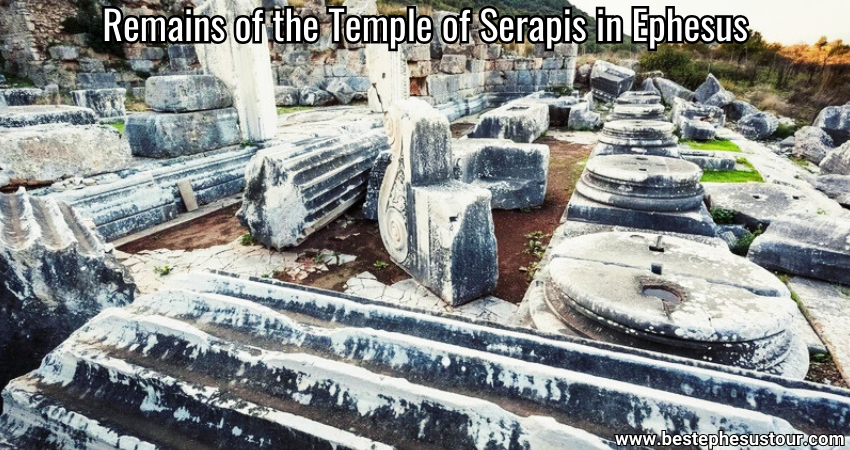
The Road to the Temple of Serapis
The staired street on the southwest side of the Commercial Agora in the Ancient City of Ephesus leads to the Temple of Serapis. The main access route to the temple begins at the west gate of the Agora. From there, a road 24 meters wide and 160 meters long, designed stoa-like, guides visitors to the temple area. A gate connects this road to a holy square, enclosed by walls, which gives the impression of a courtyard. The Temple of Serapis is situated on a higher terrace at the southern end.
Architectural Features of the Serapis Temple
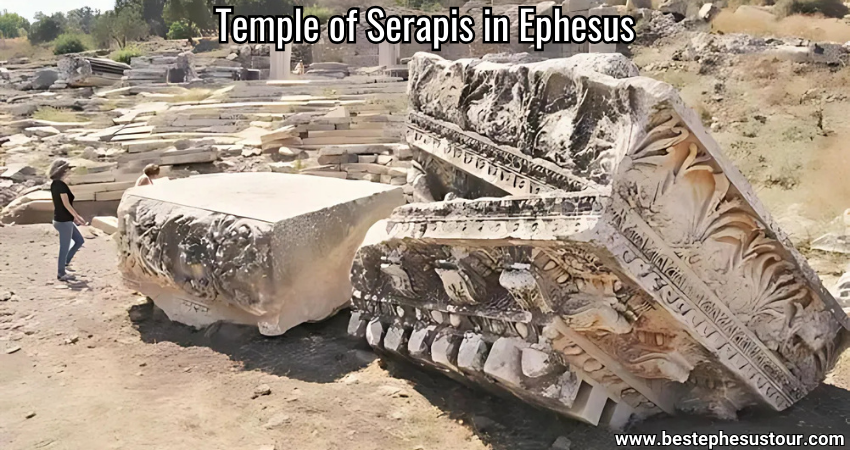
The temple of Serapis features an eight-columned prostyle plan. Each column has a diameter of 1.5 meters and weighs approximately 57 tons. Accordingly, all construction elements of the temple are proportionally massive and heavy. The temple’s large double-winged door was made of metal and designed with wheels for support, evidenced by the holes for the wheels still visible today. Various construction pieces scattered around the area suggest that the Serapis Temple was never fully completed.
Discovery and Dedication
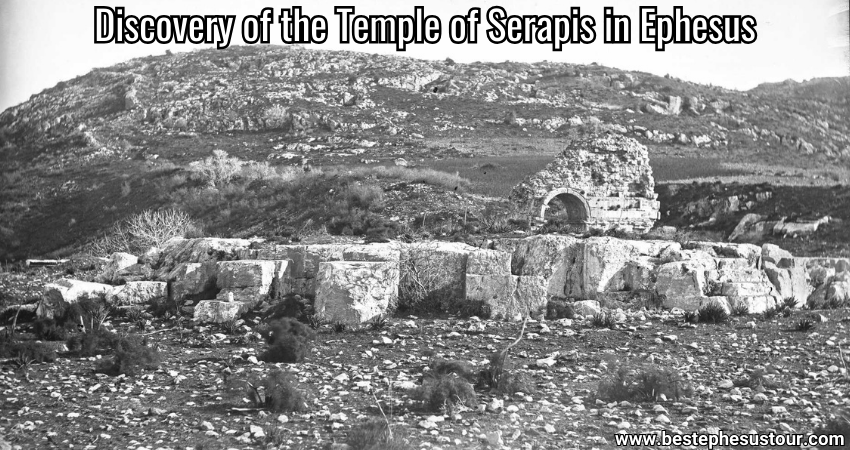
Excavations in Ephesus between 1913 and 1926 uncovered a granite statue resembling Egyptian sculptures. An inscription found nearby confirmed that the temple was dedicated to Serapis. In contrast to Roman beliefs, which accepted no life after death and saw the deceased as wandering souls, Egyptian religion offered the promise of life after death, which Serapis represented.
Egyptian Influence in Ephesus
Ephesus maintained strong ties with Egypt throughout its history. A statue of an Egyptian priest found during excavations dates back to the 6th century B.C. and was transported to Ephesus. Additionally, numerous smaller Egyptian-themed statues were discovered across the city. Alexandria, located in the Nile Delta and founded during the Hellenistic period, served as the cultural counterpart of Ephesus in Asia Minor. The cities shared commercial, cultural, and social relationships.
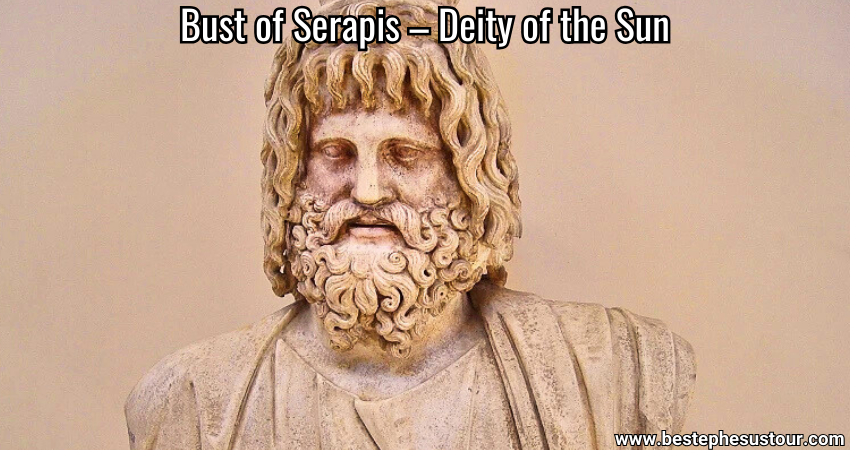
Serapis and Artemis: A Symbol of Concord
A document displayed in the Ephesus Archaeological Museum testifies to a formal agreement between Alexandria and Ephesus, witnessed by their principal deities. On one side of a 1-meter-long marble block is a statue of Artemis of Ephesus, and on the other, a statue of Serapis, the main deity of Alexandria.
The Rise of Serapis Worship in Ephesus
With growing influence, the Serapis cult found dedicated followers in Ephesus. In the 2nd century A.D., during the reign of the Antonines, the Serapeion was constructed, solidifying the presence of this Egyptian-inspired worship within the Roman religious landscape of the city.




